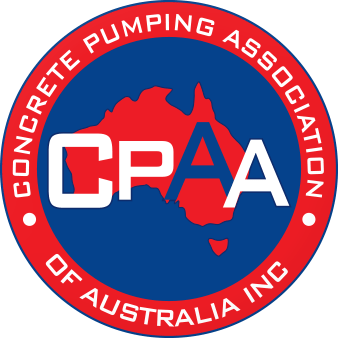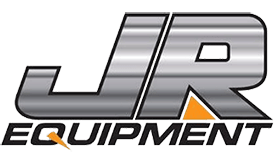AS 2550.15:2019
Cranes, Hoists and Winches – Safe Use, Part 15: Concrete Placing Equipment.
It's official ... the 25+ year old AS 2550.15 has been republished following an extensive review, updating and contemporising for today's modern concrete placing equipment.
During the past 36 months, AS 2550.15 was prepared by the Committee ME-091, Concrete Placing Equipment, to supersede AS 2550.15: 1994 Cranes—Safe use, Part 15: Concrete placing equipment. The objective of this Standard is to specify the requirements that apply to concrete placing equipment, which are not cranes used for lifting, but share some common structural, mechanical and electrical elements of cranes.
The objective of the AS 2550 series of Standards is to provide national uniform requirements and guidance for the safe use of cranes, hoists and winches, some of which are relevant to concrete placing equipment. This revision of AS 2550.15 resulted in a comprehensive update of the standard requirements, including the addition of contemporary methods and techniques to ensure concrete placing equipment safe use. The major changes in this revision are as follows:
• General document-wide terminology use.
• Expanded definitions for types of pumps, e.g. line pump, boom pump, satellite placing boom.
• Amended definition for competent person(s).
• Alignment with international standards for inspection and maintenance requirements and removal of 6 yearly mandatory 'strip downs' with a comprehensive 'periodic inspection' regime.
• Consequential amendments and alignment to AS 2550 series.
In early February 2019, the Association held a Member's Briefing Webinar to explain changes to the Standard and how these changes will be implemented over 2019. The Webinar was recorded so you can come back and watch at any time.
FREQUENTLY ASKED QUESTIONS
Q. What's the difference between May, Should and Shall in the document?
Q. When does AS 2550.15:2019 come into effect?
Q. Can a Pump Operator conduct the routine inspections (monthly)?
Q. When do I complete the first periodic inspection?
Q. How often do I conduct periodic inspections?
Q. How many operators are required for manning concrete placing equipment?
Q. What's the difference between May, Should and Shall?
A. Within the definitions of AS 2550 the committee incorporated some basic but important definitions to help readers of the document.
- Shall = Indicates a statement is mandatory
- Should = Indicates a recommendation
- May = Indicates the existence of an option
Q. When does AS 2550.15:2019 come into effect?
A. The Standard is effective from 21st January 2019, however, we believe it will take approximate 12 months to implement all changes. The Association recommends that Concrete Pumping Equipment operators implement the new Standard within the next 12 months, allowing time to train, educate and amend internal operational manuals and update to the new Association Log Books which should be available in May 2019.
Q. Have the definitions for a 'competent person' for setup, pre-operational inspections and routine (monthly) inspections changed?
A. No. AS 2550.15 defines a 'competent person(s)' as someone who has acquired through training, qualification or experiences the knowledge and skills;
- For setup, erection and dismantling: To carry out the task of setting up, erecting and dismantling concrete placing equipment as required
- For pre-operational inspections (each use): To carry out the pre-operational inspections of concrete placing equipment as required
- For routine inspections (monthly): A tradesperson in the field of fitter/mechanic or a person who has completed training and gained specific experience inspecting similar types of concrete placing equipment and their operational methods.
Q. Can a Pump Operator conduct the routine inspections (monthly)?
A. Yes, but only if they meet the definition of a 'competent person' for routine inspections (monthly). See above. The owner's duty of care is to ensure that any individual conducting the routine inspection has the necessary experience and competency which can be validated.
Q. When do I need to complete the first 'periodic inspection'?
A. The first 'periodic inspection' is determined using Table 6.1 within AS 2550.15 (6.4.4) based on the following criteria (1) Type; (2) Age; (3) Hours of operation. The date of your last twelve (12) monthly or six (6) yearly inspection (whichever is most recent), is the date you will begin recording 'hours of operation' to calculate when you conduct a periodic inspection.
Q. How often do I conduct periodic inspections?
The periodic inspection must be conducted by a competent person. It's an important inspection method for early detection for repair of service damage. The periodic inspection shall be conducted in accordance with the manufacturer's defined maintenance and inspection regime and include a report on specific critical wear and stress areas. The operating-hours meter on the machine is used to determine when the periodic inspection is due. Intervals depend on the age of the concrete placing equipment.
Q. How many operators are required for manning concrete placing equipment?
A. The owner's duty of care is to ensure that concrete placing equipment is operated in a safe manner. That is, you should evaluate the site conditions to determine what safety measures and manning is required. The Association recommends all concrete placing equipment be manned by two (2) people, but we recognise there are some tasks which may not require two (2) people.
- There is no mandatory requirement for two (2) people to operating concrete placing equipment, however,
- The concrete placing equipment operator SHALL not manipulate the boom and handle the hose simultaneously.
Extract from AS 2550.15
5.5. MANNING
The concrete placing equipment operator should operate in conjunction with a line hand. A line hand may not be required if the discharge hose doesn't need to be moved or directed during the pour (e.g. when pouring into a lift base). The equipment operator shall not manipulate the boom and handle the hose simultaneously.
Concrete placing equipment should be manned by a minimum of:
a) one pump operator;
b) one boom operator;
c) one line hand (where required); and
d) a spotter (where required).
For a mobile boom pump, the pump operator and the boom operator may be the same person.
More questions? Contact us.










